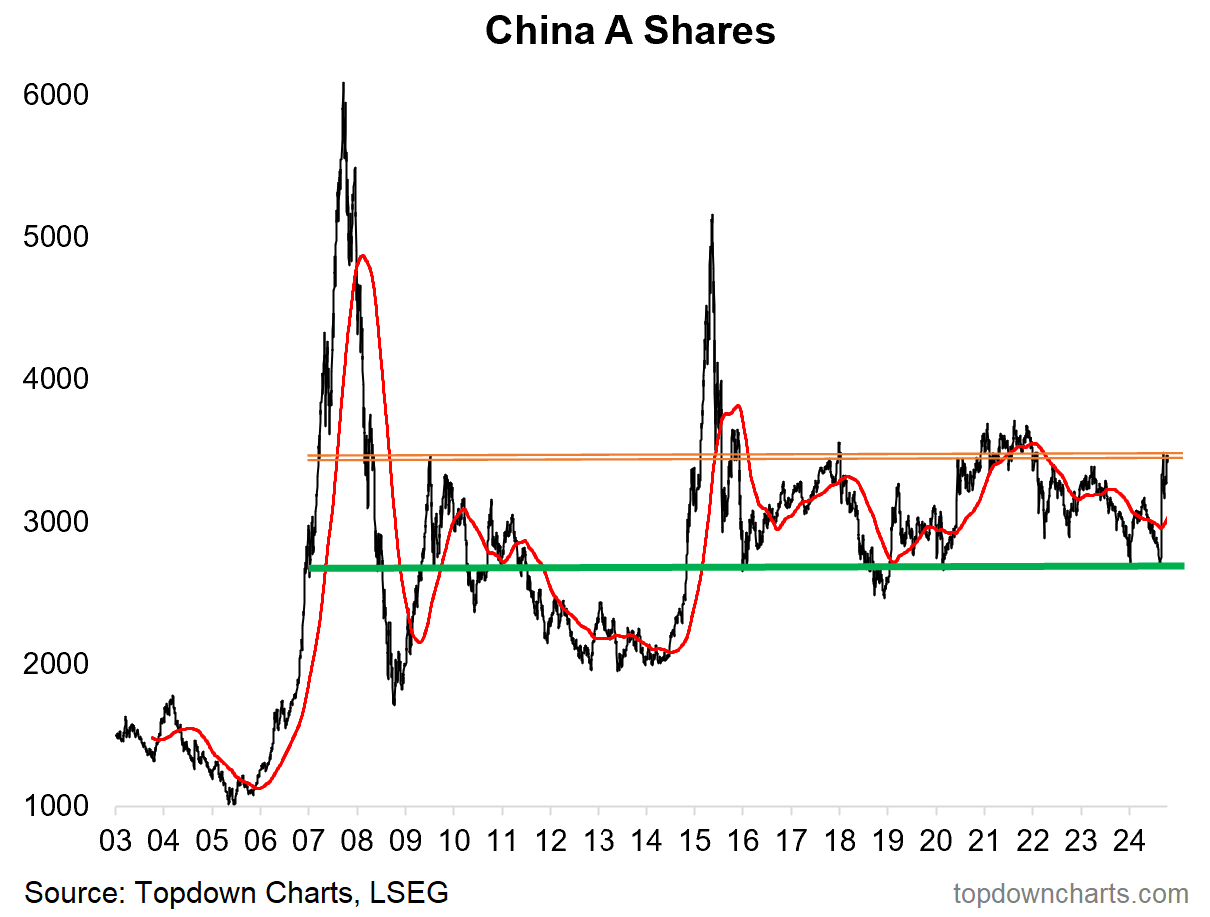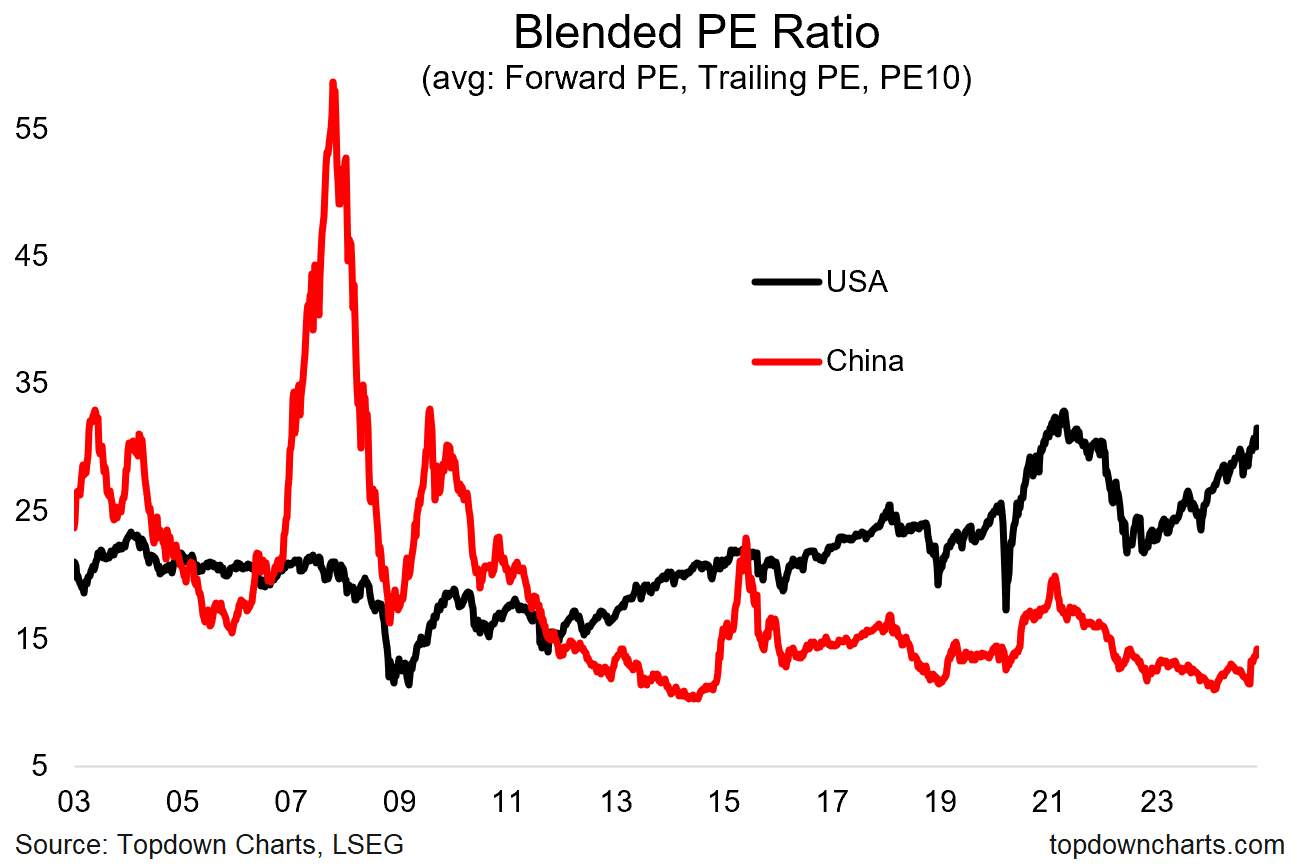Why this "obvious loser" of the election may actually be a big winner...
Trumphoria is gripping markets — everyone expects a repeat of the 2016 bull run when Trump first got elected.
All the obvious beneficiaries of a Trump presidency have been rallying, while some of the obvious losers have been punished.
Conventional wisdom says one “obvious loser“ (i.e. China A-Shares) will suffer under the second coming of Trump, with the prospect of more tariffs, trade-wars, and tough negotiations hanging overhead.
The logic is that trade war 2.0 risk and a generally hawkish geopolitical tone across the incoming Trump administration will present further challenges for an already ailing Chinese economy.
And there’s probably some truth in that — it’s going to be: not-boring.
As things stand right now, China is in the middle of its worst property downturn on record, local government debt and banking system issues persist, soft employment growth + sluggish new orders, and generally slumping confidence along with a clear and entrenched disinflation trend, and maybe even the risk of deflation.
This would typically be a dog whistle to a traditional central banker to start full blast into monetary easing. And they are doing that, albeit so far it’s been a slow and measured pace, nothing like the past episodes of big-bang stimulus.
But that is changing (hence the blip up in the chart below). Stimulus is starting to step-up, and measures are being taken on reforms and restructuring to deal with excess inventories and debt.
Back on topic — if you think about the second-order effects of a new trade war, one response that China is likely considering would probably be more stimulus to stoke up the domestic economy and defend against the downside impacts of headwinds and shocks from tariffs and generalized uncertainty.
That’s the kind of thing that would drive follow-through in what may well be the start of a new and significant bull market in Chinese stocks.
On the technicals, we’ve seen a sharp rally off a key long-term support level; easily clearing its 200-day moving average, and now making a move on that major long-term overhead resistance level. Importantly, the surge has stuck, it hasn’t just broken out and then fallen back down — there is something to this.
Should it go-on to clear that major overhead resistance zone there’s no telling how far it will go — history shows that this has been an “ON/OFF market” and when it’s ON it can go further and faster than you expect.
So this “obvious loser“ might have some of its own surprises in store as investors underthink the immediate vs second order impacts of the second Trump presidency on global markets.
Key point: Chinese stocks may have more upside than consensus thinks.
ONE MORE THING — Valuations & Rethinking…
Bonus Chart: Helping the case above, and a critical additional piece of context — Chinese stocks are still trading on cheap valuations despite their heroic rebound.
Note; the below chart shows the average of the forward/trailing/PE10 to try maximize signal vs noise, but we also see the same signal across other metrics like the equity risk premium, adjusted PE ratios excluding resources and financials, price to book ratio, etc.
Meanwhile the “obvious winner“ of the election — US stocks are trading at the upper end of the range, expensive levels and significantly higher than back in 2016 (when they were actually kind of cheap, sentiment was washed out, and QE pumping from the ECB/BOJ). In other words, the hurdle is high, and it very much is different this time at least in terms of the background market context.
So again: maybe the obvious thing is obviously wrong.
The big surprise in the coming months and years could even be a reversal of fortunes for US vs Chinese stocks as the Chinese economy has already gone through a notable downturn and begun to take its medicine on reforms and restructuring meanwhile the US has high hurdles of expensive valuations, euphoric sentiment, and a difficult policy path ahead in terms of debt sustainability and a potential radical wave of reforms (which by nature would be short-term pain for longer-term gain; something that is probably quite good, but brings with it certain realities and risks).
It’s all a reminder to check the conventional wisdom, challenge the consensus, and question what the actual conditions are; and ultimately to think for ourselves. The crowd is often right through the range, but wrong at extremes, and wrong when the facts silently and subtly change under the surface. The thinking that worked in the past may not work in the future. And in my book: charts help to keep the thinking fresh
